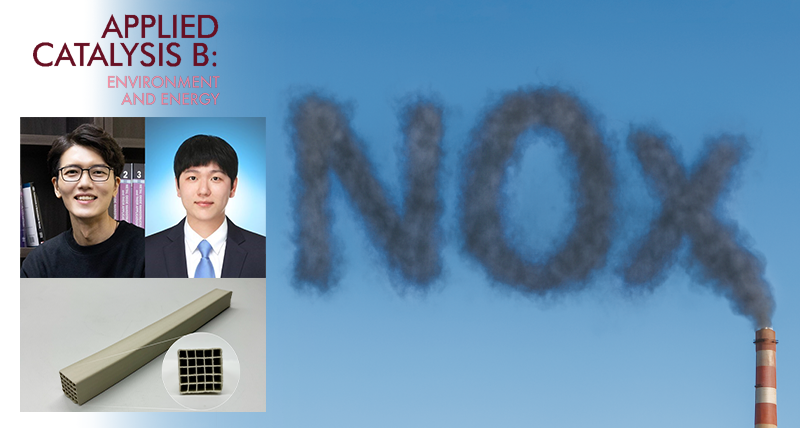Nitrogen oxides (NOx), a major contributor to air pollution, are emitted from a variety of fuel combustion sources—including industrial smokestacks, vehicles, and ships. The emission temperatures of NOx vary significantly depending on the type of fuel used and operating conditions of the equipment. In light of these changes, researchers have developed a groundbreaking catalyst capable of consistently and efficiently removing NOx across a wide temperature spectrum.
Led by Professor Seungho Cho from the Department of Materials Science and Engineering at UNIST, in collaboration with Dr. Hong-Dae Kim at the Korea Institute of Industrial Technology (KITECH), the research team announced the development of a novel denitrification catalyst effective between 240°C and 400°C. This innovation promises to significantly improve the stability and efficiency of NOx reduction in diverse real-world environments.
NOx released into the atmosphere are known to contribute to severe environmental issues, including fine dust formation, ozone pollution, and acid rain. While Selective Catalytic Reduction (SCR) systems are widely used to convert NOx into harmless nitrogen (N2), conventional vanadium-tungsten catalysts typically operate optimally only around 350°C. This narrow temperature window often results in performance degradation under fluctuating field conditions, limiting their effectiveness.
In contrast, the new catalyst demonstrates an impressive 93.6% removal efficiency at 240°C and maintains over 97% conversion efficiency at higher temperatures. Compared to existing commercial SCR catalysts, which achieve approximately 62.4% efficiency at 240°C, this advancement represents a substantial leap forward. Moreover, the catalyst converts over 97% of NOx into nitrogen, with minimal formation of byproducts such as nitrous oxide (N2O), a potent greenhouse gas. The catalyst also exhibits enhanced longevity, promising more durable and cost-effective operation.
The exceptional performance of this catalyst is primarily attributed to the strategic incorporation of a small amount of hexagonal boron nitride (h-BN). This material plays a crucial role in maintaining vanadium ions in an active state and protecting the catalyst surface from fouling by contaminants such as sulfates and moisture—factors that typically shorten catalyst lifespan.

Figure 1. Photograph of honeycomb-type monolith catalysts with a cell density of 25 cells per square inch fabricated for practical application in stationary sources.
To facilitate industrial application, the research team also validated the performance of the catalyst in a monolithic form. While powdered catalysts offer superior reactivity, their practical use is often hindered by issues such as dust generation and pressure loss. The monolith structure developed by the team effectively handles high gas flow conditions—processing several tens of micrograms of NO per second at 20 L/min—making it suitable for real-world deployment.
Professor Cho remarked, “The broad operational temperature range of our catalyst enables stable and efficient removal of NOx from various emission sources, including factories, vehicles, and ships.” He further noted, “We anticipate that reducing the reliance on toxic and expensive vanadium will enhance both safety and economic viability in industrial settings.”
This research was published online on June 12 in Applied Catalysis B: Environmental and Energy, a leading journal in environmental engineering (IF: 21.1), with Myeung-Jin Lee, a graduate student of UNIST, served as the first author. The study was supported by the Ministry of Science and ICT (MSIT), the National Research Foundation of Korea (NRF), the Ministry of Trade, Industry and Energy (MOTIE), and the Korea Institute of Industrial Technology (KITECH).
Journal Reference
Myeung-Jin Lee, Bora Jeong, Donghyeok Kim et al., “Hexagonal boron nitride heterostructure to control the oxidation states and SO2 resistance of the V2O5-WO3/TiO2 catalyst for the NH3-SCR reaction across a wide temperature range,” Appl. Catal. B: Environ., (2025).












